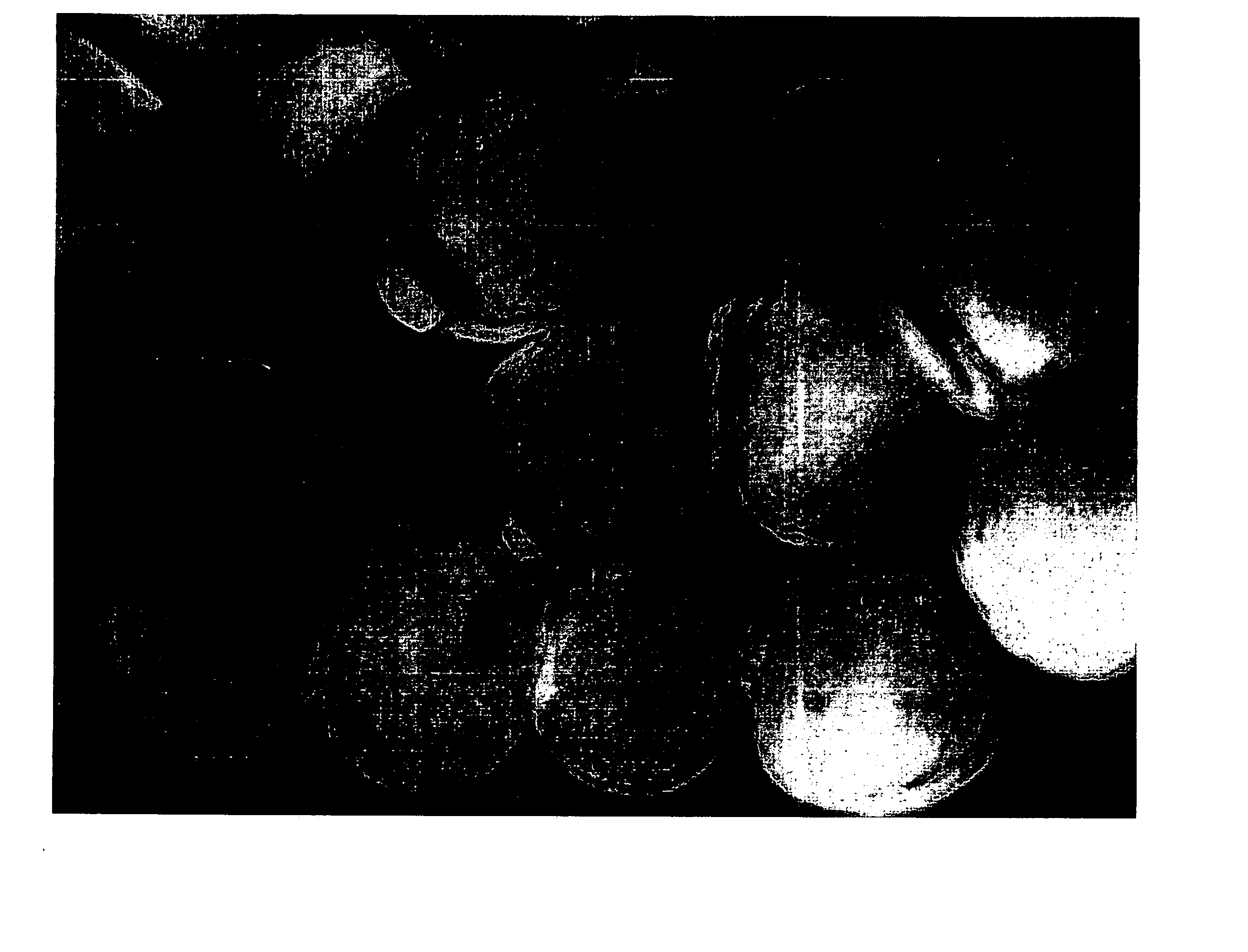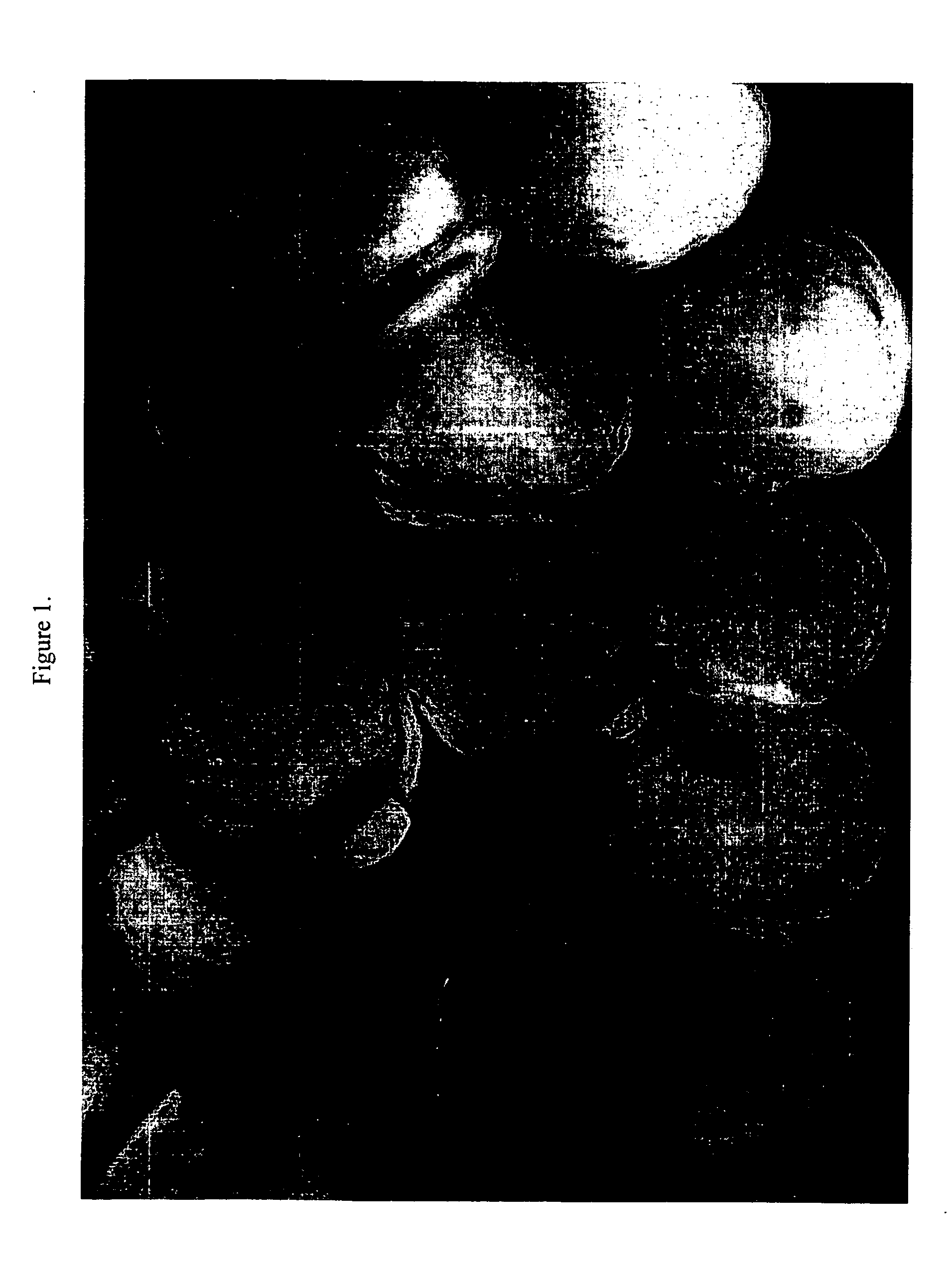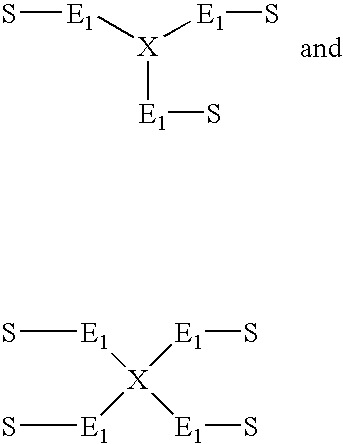Elastomeric bicomponent fibers comprising block copolymers having high flow
a technology of elastomeric compound and bicomponent fiber, which is applied in the direction of building components, textiles and paper, synthetic resin layered products, etc., can solve the problems of high melt viscosity, high melt elasticity, and high cost of specialized melt pump equipment, and achieve high melt flow, high rate, and high melt flow of elastomeric compound
- Summary
- Abstract
- Description
- Claims
- Application Information
AI Technical Summary
Benefits of technology
Problems solved by technology
Method used
Image
Examples
examples
[0089] The term “elastic” is used herein to mean any material which, upon application of a biasing force, is stretchable, that is, elongatable at least about 60 percent (i.e., to a stretched, biased length which is at least about 160 percent of its relaxed unbiased length) and which, will recover at least 40 percent of its elongation upon release of the stretching, elongating force. A hypothetical example would be a one (1) inch sample of a material which is elongatable to at least 1.60 inches (4.06 cm) and which, upon being elongated to 1.60 inches (4.06 cm) and released, will recover to a length of not more than 1.27 inches (3.23 cm). Many elastic materials may be elongated by much more than 60 percent (i.e., much more than 160 percent of their relaxed length), for example, elongated 100 percent or more, and many of these will recover to substantially their initial relaxed length, for example, to within 105 percent of their initial relaxed length, upon release of the stretching fo...
examples 1-8
[0092] Bicomponent fibers with a polypropylene sheath and a SEBS elastomer core at sheath / core ratios of 30 / 70 and 20 / 80 were made according to the following description. The polypropylene sheath was a nominal 38 MFR homopolymer (5D49) from The Dow Chemical Company. The elastomer core (Polymer 7) was a nominal 50 MFR, high vinyl (vinyl content=75 mol %), coupled SEBS copolymer (coupling efficiency=96%) with an 18% styrene content, a styrene MW of 6600 and a midblock molecular weight of 60,000.
[0093] The fibers were made using a conventional, commercial-type high speed spinning process using bicomponent technology and spinnerets from Hills Inc.
[0094] Table 1 gives typical spinning performance and mechanical properties of the fibers. From Table 1, one can see that high speed spinning can be achieved (Examples 3 5, and 8) as well as reasonable fiber tensile strength and elongation-to-break (Examples 1, 2, 4, 6, 7). Exceptionally high spinning speeds were attainable. The sheath-core b...
examples 9-13
[0095] Bicomponent fibers with a polypropylene sheath and a SEBS elastomer core at sheath / core ratios of 30 / 70 and 20 / 80 were made according to the following description. The polypropylene sheath was a nominal 38 MFR homopolymer (5D49) from The Dow Chemical Company. The elastomer core (Polymer 5) was a 31 MFR, high vinyl (vinyl content=76%), coupled SEBS copolymer (coupling efficiency=94%) with an 18% styrene content, a styrene MW of 6200 and a midblock molecular weight of 56,000.
[0096] The fibers were made via a conventional, commercial-type high speed spinning process using bicomponent technology and spinnerets from Hills Inc.
[0097] Good tensile properties could be achieved with the 31 MFR elastomer (Examples 9, 11 and 12). The attainable spinning speed was in the range of 1500 to 1800 mpm.
PUM
| Property | Measurement | Unit |
|---|---|---|
| weight percent | aaaaa | aaaaa |
| wt % | aaaaa | aaaaa |
| melt flow rate | aaaaa | aaaaa |
Abstract
Description
Claims
Application Information
 Login to View More
Login to View More - R&D
- Intellectual Property
- Life Sciences
- Materials
- Tech Scout
- Unparalleled Data Quality
- Higher Quality Content
- 60% Fewer Hallucinations
Browse by: Latest US Patents, China's latest patents, Technical Efficacy Thesaurus, Application Domain, Technology Topic, Popular Technical Reports.
© 2025 PatSnap. All rights reserved.Legal|Privacy policy|Modern Slavery Act Transparency Statement|Sitemap|About US| Contact US: help@patsnap.com



